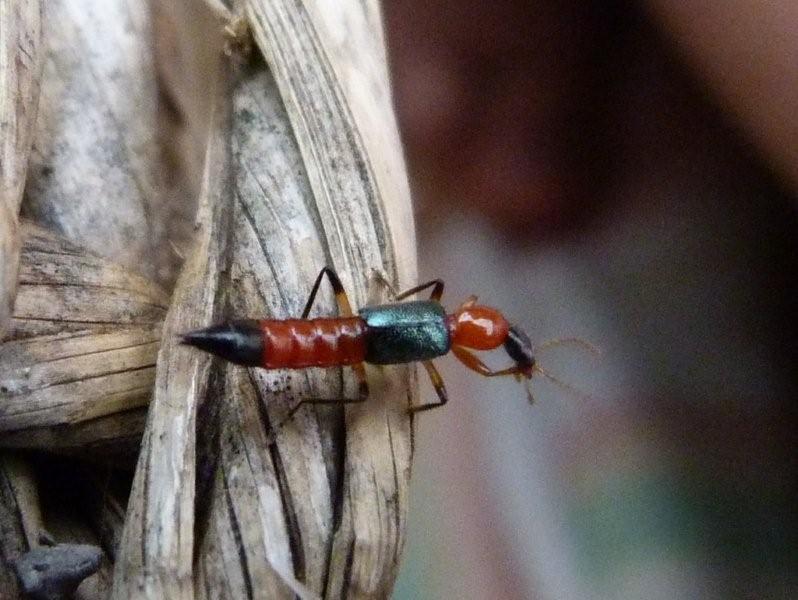Life & Health

Some 30 people visit Damak Hospital and Research Centre daily, complaining of skin irritations possibly stemming from Nairobi flies, a species of the rove beetle which are also common in Nepal and other South Asian countries.
“The number of cases has soared in the district of late,” said Dr Guru Poudel, a doctor of skin and sexually-transmitted diseases at Damak Hospital. Earlier, similar complains were reported in the Indian state of Sikkim, not very far from Jhapa.
Not just in Jhapa, people in Kathmandu and Kanchanpur in the Far-West too have visited health centres seeking treatment of infection caused from their contact with the Nairobi fly.
Three people visited Civil Hospital in Kathmandu last week for treatment of that infection. Cases reported in Kathmandu, Jhapa and Kanchanpur show that the infections are happening at the community level in several parts of the country.
Issuing a notice on its social media post, Damak Hospital and Research Center has asked the people to remain in a high alert as the infections, that is, Paederus dermatitis, could spread to a larger number of people.
What are Nairobi flies?
Nairobi flies, also called Kenyan flies or dragon bugs, are small beetle-like insects that belong to two species, Paederus eximius and Paederus sabaeus. They are orange and black in colour, and thrive in areas with high rainfall.
These flies do not bite or sting. On being irritated, they release a potent acidic substance called pederin on a person’s skin.
“This acidic substance causes burns on the skin. The chemical can cause unusual burn marks, colouring or lesions on the skin. Blisters erupt, filled with a yellowish fluid,” said Dr Prajwal Pudasaini, a dermatologist and venereologist at Civil Hospital.
In the past, major outbreaks had occurred in Kenya and other parts of eastern Africa. In 1998, unusually heavy rain caused a large number of insects to come into the region.
Outside Africa, past outbreaks have been reported in India, Japan, Israel, and Paraguay.
Rashes and blisters
The symptoms will appear between 12 and 48 hours of infection.
“Skin inflammation and appearance of rashes and blisters are some of the symptoms of the infection,” said Dr Poudel. “The lesions appear all of a sudden. Symptoms can be seen in areas where there are folds such as arms, legs, genitals and eyes.”
Doctors advise not scratching the irritated skin as it could lead to secondary infections. If the toxins come in contact with people's eyes they can cause conjunctivitis, they warn.
“This infection is seen every year. However, this year a larger number of people have been infected from it,” the doctors say.
The infection recently appeared in students of Sikkim and has since been going around.
According to Indian media reports, fear and panic gripped the students so much that many left the hostel and headed back home.
Common in youths and children
“Though a number of cases have been reported from various parts of Nepal, the infection should not cause much worry in terms of its severity,” said Dr Gokarna Dahal, section chief, neglected tropical and vector-borne diseases at the Epidemiology and Disease Control Division.
According to Dr Pudasaini, the flies can overwhelm new areas in search of breeding grounds, where they get ample amounts of food supply. The sunny days after rainfall give the flies favourable environment to grow.
“The cases will drop as the rains subside. Therefore, the people do not need to panic because there is infection now,” said Dr Dahal.
The infection is common in people active outdoors. Children are more susceptible to the infection as they usually play outdoors.
The flies are more active at night.
No medicines without consultation
The doctors, however, warn that people should not take unnecessary medicines without expert consultations because the symptoms of the infection from Nairobi flies are similar to those of the herpes zoster and skin allergies.
“Intake of any antibiotics and medications will have a counter effect on one’s health,” said Dr Poudel.
The patients can use calamine lotion and petroleum jelly in the infected parts. The infection is not fatal and is treatable but it can lead to skin discolouration, the doctors say.
These flies are native of Nairobi, Kenyan capital, in eastern Africa.
“Though they are native to Kenya they were with us. It is not that they have flown all of a sudden from Nairobi to Nepal this year. It is just that the number of cases has risen here this year,” said Dr Dahal.
Like other insects these flies are also attracted by bright light. The doctors, therefore, suggest people not use unnecessary lights inside the house.
How to keep safe from Nairobi flies
• If the fly lands on you, gently brush it off. The fly should not be crushed. Use tissues or newspapers to take the fly from the skin.
• Do not touch any other part of your body, particularly the eyes, with your hands without washing them in case you touch the fly.
• Wash the areas where the fly has sat.
• Sleep under the mosquito nets.
• Put nets on window frames.
• Wear full sleeved clothes.
• Use anti insect repellants.
• Avoid sitting under lights at night.
• Avoid going outdoors in the evening.
• Stay calm and don’t panic while avoiding the flies if you see them.

_11zon1681280198.jpg)




